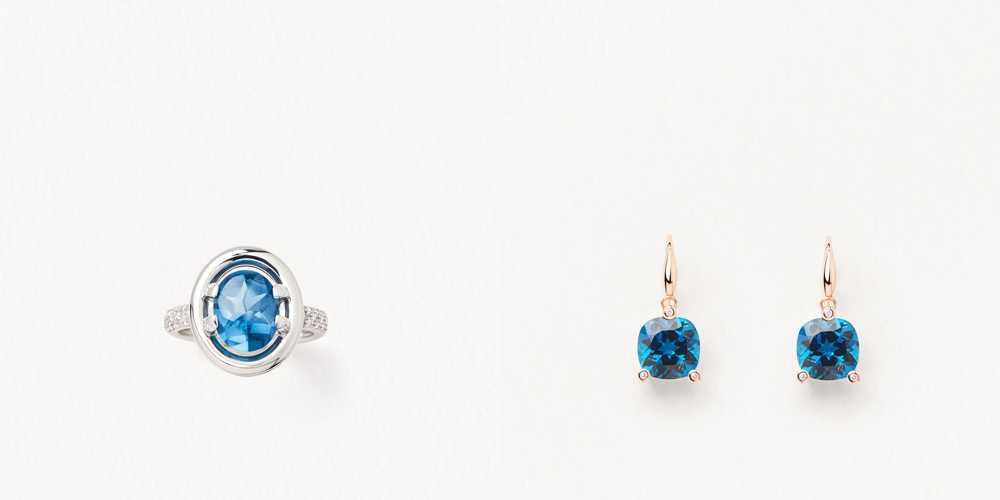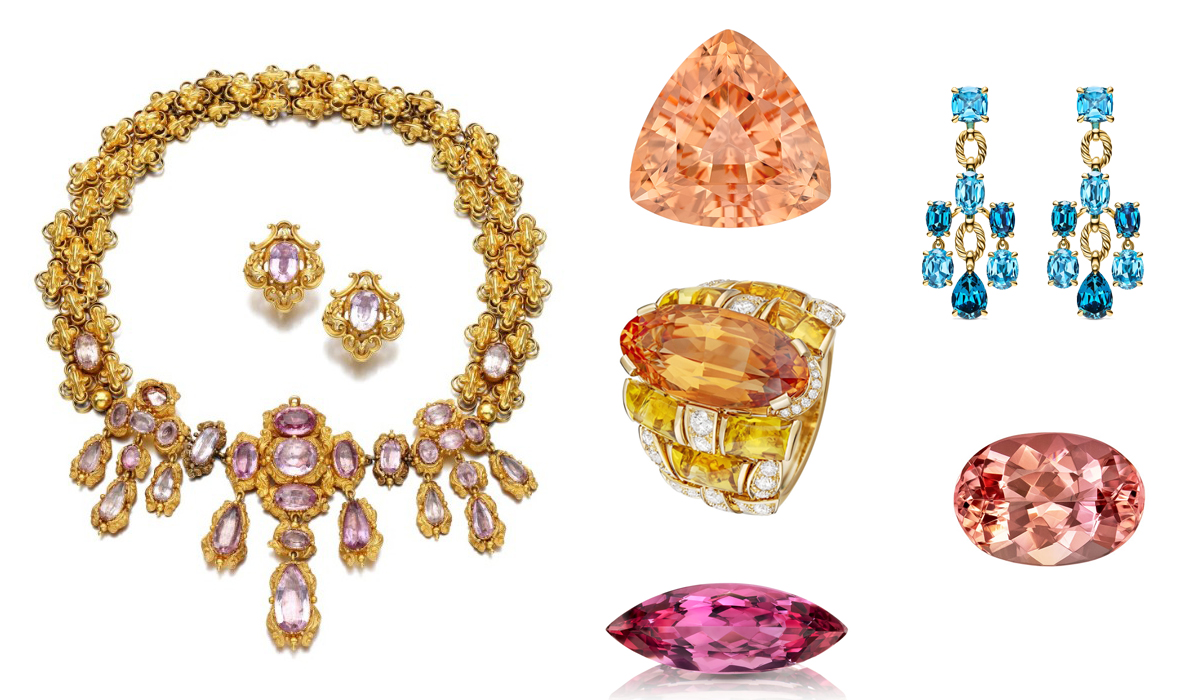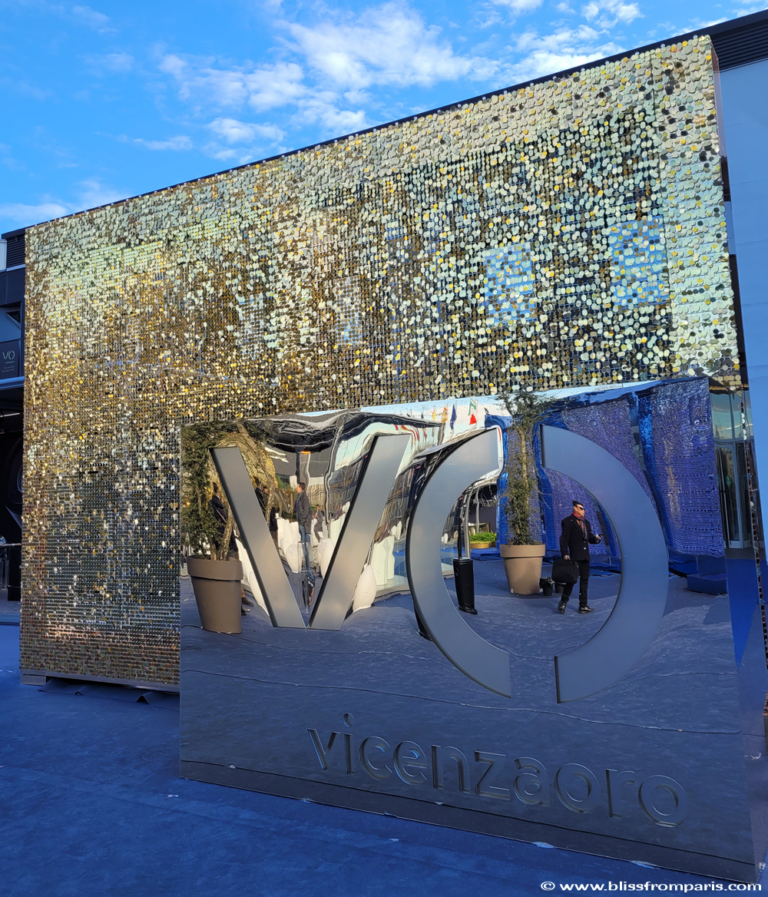In the vast and scintillating world of gemstones, topaz occupies a unique place — a mineral born from fire, yet known for its crystalline purity and ethereal glow. Its name, derived from the ancient Sanskrit tapas meaning “fire,” perfectly encapsulates its dual nature: both fierce and serene, radiant yet grounded. For centuries, topaz has fascinated gem collectors, jewelry lovers, and mystics alike with its wide spectrum of colors and its intriguing geological story.
A Gem of Many Origins
Topaz is an aluminum fluoro-silicate, crystallizing in the orthorhombic system. It typically forms in granitic pegmatites and rhyolites — the final stages of igneous rock crystallization — where volatile elements like fluorine create ideal conditions for its growth. Its natural crystals often display remarkable transparency and size, with some reaching several kilograms, yet retaining perfect clarity.
Major sources include Brazil, particularly the Minas Gerais region, whose name has become almost synonymous with fine topaz. There, the famed Imperial Topaz — the fiery reddish-orange to pink variety — is mined from narrow veins in the rugged hills of Ouro Preto. Other important deposits can be found in Pakistan, Nigeria, Sri Lanka, Russia, and Myanmar, each producing material of distinct hues and qualities.
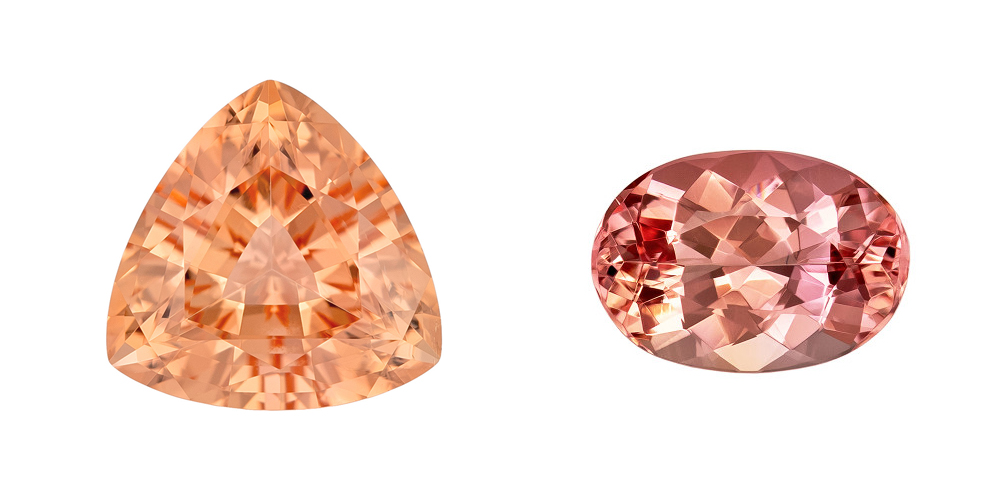
A Symphony of Color
Few gemstones can rival topaz in its chromatic diversity. While pure topaz is colorless, trace elements and natural irradiation create an extraordinary range of shades — from pale blue and honey-yellow to vibrant pink, red, and golden-orange. The most valuable and sought-after is Imperial Topaz, a name historically reserved for the sunset hues found exclusively in Brazil. These stones, with their warm blend of peach, amber, and pink, have adorned European royalty since the 18th century, earning their title through imperial patronage.
Blue topaz, by contrast, owes much of its modern popularity to technology. Natural blue specimens are rare; most are created by carefully irradiating and heating colorless or pale topaz to yield shades known commercially as “Sky Blue,” “Swiss Blue,” or “London Blue.” Despite their treated origin, these gems are durable, stable, and ethically produced, making them an accessible and beloved choice for contemporary jewelry.
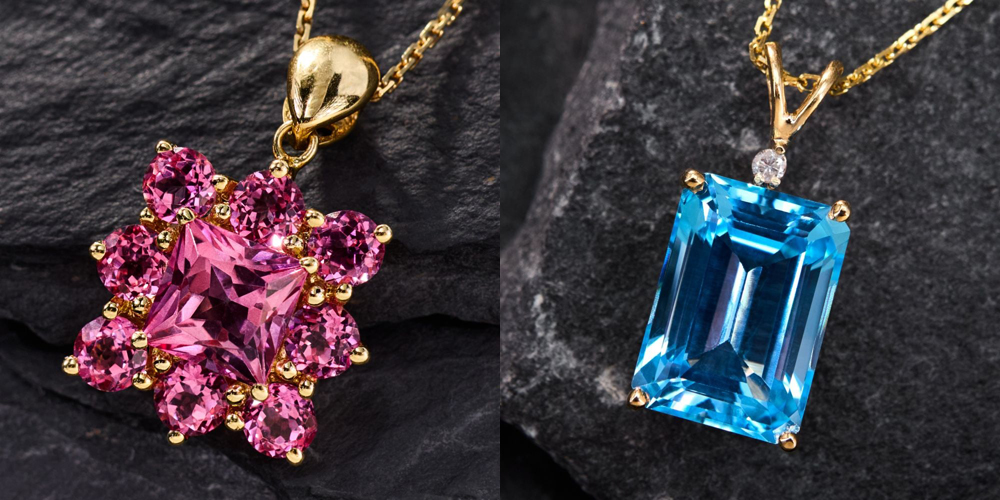
A Gem of Celebration and Meaning
Topaz carries profound symbolic value across cultures — not only as a talisman of clarity and protection, but also as a stone of joy and renewal. Precious topaz is one of the traditional birthstones for November, while blue topaz represents December. The stone also marks important milestones in love: blue topaz is the gem of the 4th wedding anniversary, and Imperial topaz is the gem of the 23rd anniversary.
Whether in warm golden tones or cool sky blues, topaz remains a symbol of light and resilience — a gemstone that celebrates calm and passion, intellect and emotion. Its luster, brilliance, and versatility make it one of the most cherished stones in the jeweler’s palette.
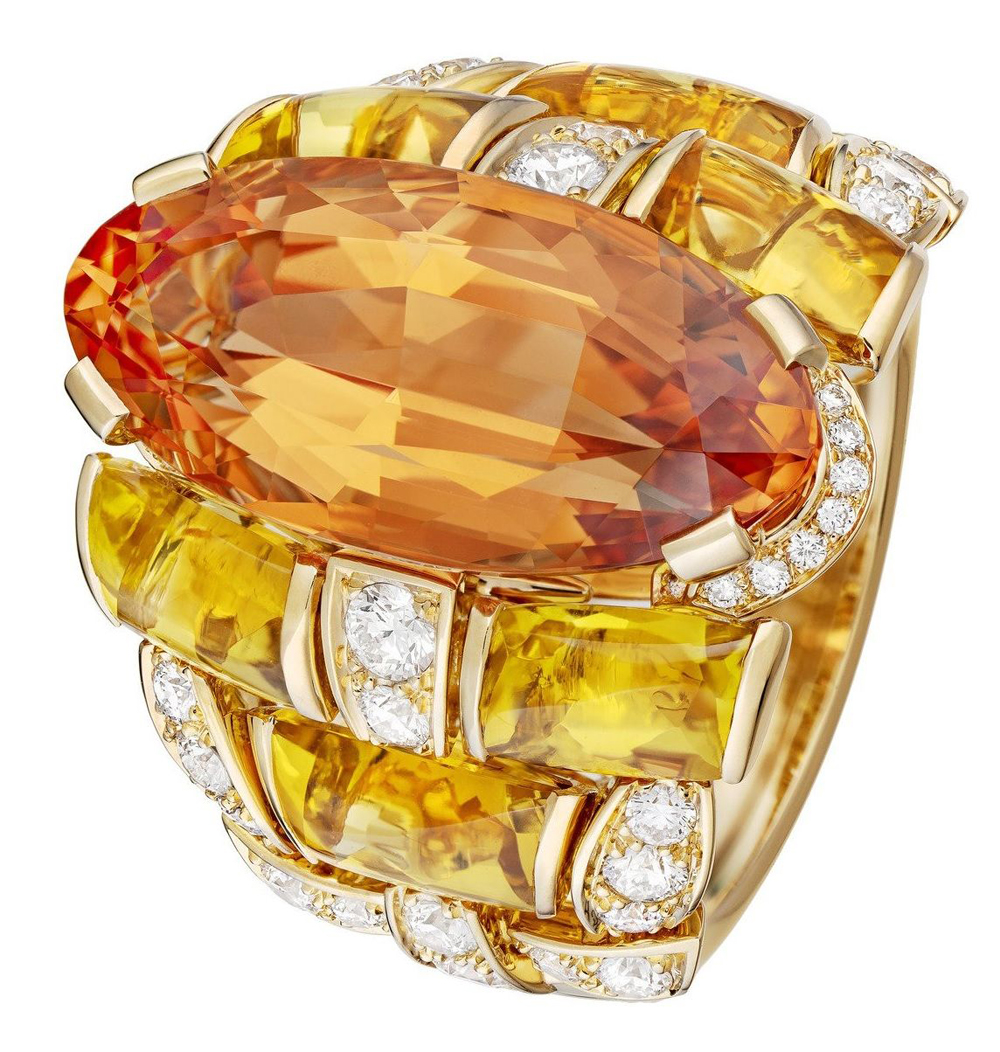
From Mysticism to Modernity
Topaz’s history is interwoven with myth and metaphysics. Ancient Egyptians believed it to be colored by the golden glow of Ra, the sun god, and thus a source of divine protection. In medieval Europe, it was thought to calm anger, dispel enchantments, and enhance mental clarity. The 17th-century alchemist Paracelsus even prescribed powdered topaz as a cure for fever — a dangerous but telling symbol of the stone’s perceived vitality.
In modern gemmology, topaz remains a stone of paradox: a hard gem (8 on the Mohs scale) yet one with perfect cleavage, making it vulnerable to breakage if struck. This duality — strength and fragility intertwined — gives topaz its poetic charm. It is a gemstone that demands respect, both from the cutter and the wearer.
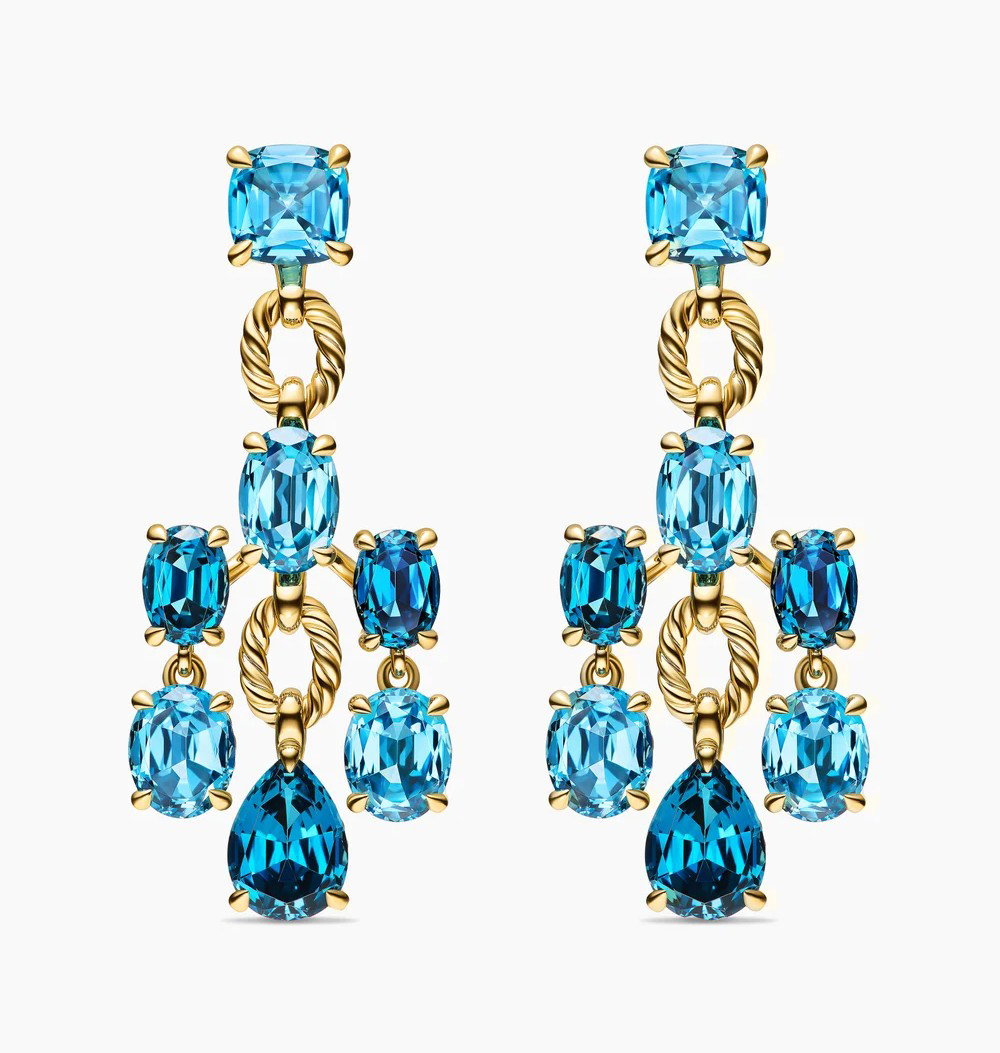
Topaz in Jewelry and Design
Topaz’s versatility makes it a designer’s dream. The stone’s high transparency, vitreous luster, and ability to accept fine polishing allow it to sparkle brilliantly in a wide array of cuts — from classic ovals and emerald cuts to modern fantasy shapes. Designers today embrace its range of colors to express contrasting moods: serene blues for minimalist aesthetics, and fiery imperials for bold statement pieces.
One can find topaz in nearly every jewelry style, from Georgian antique brooches to avant-garde contemporary creations. Its affordability relative to its size and brilliance has made it a favorite for large cocktail rings and chandelier earrings, where its radiance can play freely with light.
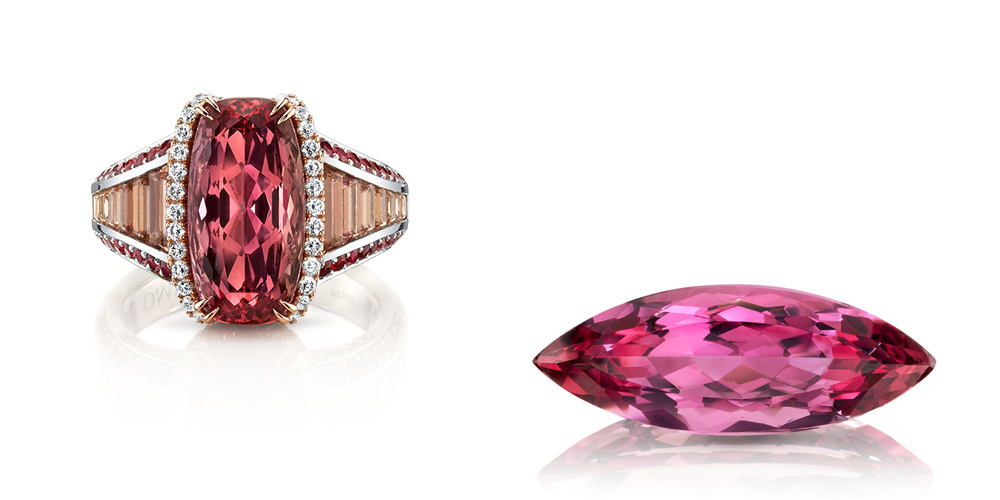
A Gem of Light and Intellect
Beyond its aesthetic allure, topaz symbolizes clarity, intellect, and creative expression — perhaps reflecting the gem’s very nature as a crystallization of fire transformed into light. It speaks to those who seek balance between intellect and emotion, power and grace. Whether one wears a soft blue topaz as a token of tranquility or an imperial orange as an emblem of vitality, this gemstone captures the eternal dialogue between energy and serenity.
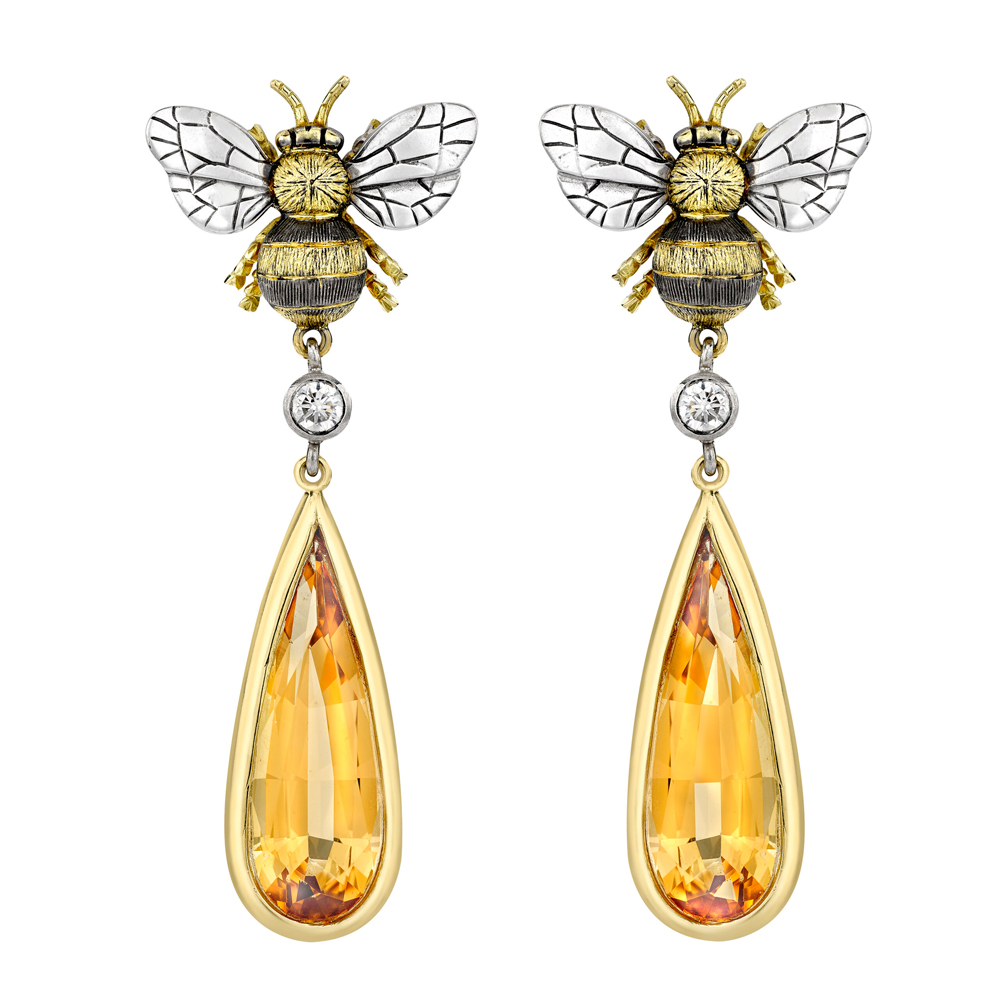
In a world often obsessed with rarity, topaz reminds us that beauty lies not only in exclusivity but in transformation — in the dance of fire and light that turns a common mineral into a symbol of enduring brilliance.
